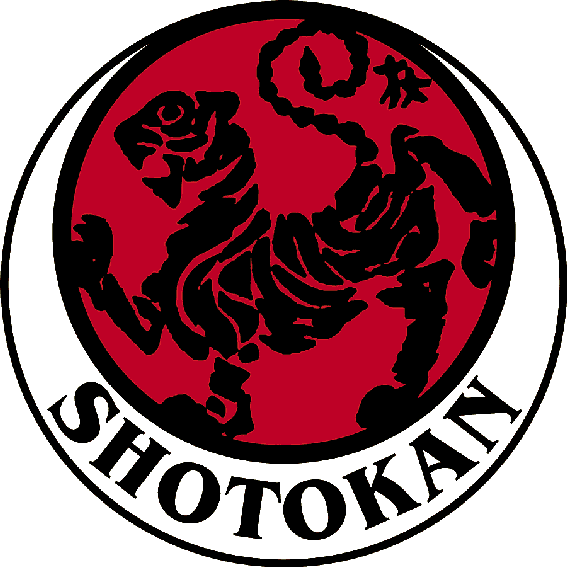Shotokan is one of the most popular and widely practised styles of karate in the world. It is renowned for its technical rigour, long, low postures and diversity of katas. The history of Shotokan, its evolution and the key people who have contributed to its growth and popularity offer a fascinating perspective on the evolution of karate around the world.
1. History of Shotokan
Shotokan was founded by Gichin Funakoshi, an Okinawan who is often regarded as the father of modern karate. Funakoshi was born in 1868 in Okinawa, at a time when karate was still a secret discipline taught behind closed doors. Funakoshi began learning karate at a young age and became a student of two of the greatest karate masters of the time, Yasutsune Azato and Yasutsune Itosu.
Funakoshi did much to popularize karate in the first half of the 20th century. In 1922, he was invited to Tokyo to present karate at a martial arts event. The demonstration was so successful that Funakoshi stayed on to teach karate in Tokyo, marking the beginning of the spread of karate in Japan and the rest of the world.
In 1936, Funakoshi opened the first official karate dojo in Tokyo, which he called Shotokan. The name Shotokan translates as “the house of Shoto”, Shoto being the pen name Funakoshi used for his poems, meaning “pine waves”.
2. Shotokan schools
After Funakoshi’s death in 1957, many of his students set up their own organizations to continue his teaching. These organizations include the Japan Karate Association (JKA), founded by Masatoshi Nakayama, and Shotokai, headed by Shigeru Egami. These schools have retained the fundamental principles of Shotokan, while developing their own interpretations of katas and techniques.
The JKA is without doubt Shotokan’s best-known and most influential organization. It has set rigorous standards for Shotokan teaching and practice, and has helped spread karate around the world through its international instructor program.
3. Important Shotokan players
In addition to Gichin Funakoshi, several other people played a crucial role in the development and promotion of Shotokan. Masatoshi Nakayama, for example, was a student of Funakoshi and the JKA’s first chief instructor. He has written numerous books on Shotokan and contributed to the popularity of the style through his work at the JKA.
Hirokazu Kanazawa is another important Shotokan figure. He is renowned for his impeccable technique and balance between power and control. He won the first world karate championship in 1957 and founded his own organization, the Shotokan Karate International Federation (SKIF), in 1978.
Tetsuhiko Asai was another student of Funakoshi and also served as chief instructor of the JKA. Asai was known for his technical innovation and added many new leg techniques and movements to the Shotokan curriculum.
4. Shotokan features
Shotokan is distinguished by several unique features. One of these is the emphasis on long, low postures, which are used to develop power and stability. Shotokan is also known for its powerful, linear movements, which contrast with the circular movements of some other karate styles.
Shotokan focuses on kihon (basics), kata (forms) and kumite (fighting). Kihon includes techniques such as punching, kicking and blocking. Shotokan has 26 official katas, varying in difficulty and complexity.
Kumite can be practised in a variety of ways, including basic kumite (kihon kumite), pre-arranged kumite (yakusoku kumite) and free sparring (jiyu kumite). In Shotokan, the aim of kumite is not only to win a fight, but also to develop self-mastery and improve character.
Shotokan is also known for its philosophy and ethics. Funakoshi enunciated the twenty principles of karate, which serve as a guide to Shotokan practice. These principles emphasize respect, integrity, humility and the constant quest for improvement.
5. Shotokan today and its worldwide influence
Since its creation, Shotokan has expanded worldwide, with practitioners and dojos in almost every country. Organizations such as the Japan Karate Association (JKA) and the Shotokan Karate International Federation (SKIF) have played a major role in the spread of Shotokan, establishing dojos and training programs all over the world.
Shotokan karate tournaments are held regularly on an international scale, enabling karatekas to test their skills and measure themselves against others. Such events help to promote camaraderie and respect between karatekas, regardless of nationality or origin.
Many Shotokan karatekas have also helped to promote the style and karate in general by taking part in public demonstrations, giving lectures, writing books and appearing in films and TV shows.
6. The future of Shotokan
While Shotokan continues to develop and spread worldwide, it remains true to its roots and original philosophy. The emphasis on character development, respect for others and constant self-improvement is always at the heart of Shotokan practice.
However, as with any martial art, Shotokan also evolves to meet the needs and challenges of the modern world. For example, many Shotokan dojos now incorporate techniques and concepts from other karate and martial arts styles to enhance their curriculum. What’s more, with the inclusion of karate in the Olympic Games, Shotokan and other karate styles are gaining greater recognition and visibility.
7. Shotokan derivative styles
Over time, Shotokan has given rise to several other styles of karate that have integrated and adapted its techniques and principles. Some of these styles were created by students of Funakoshi or his successors, who sought to explore new dimensions of karate while retaining the spirit and philosophy of Shotokan.
For example, Shito-Ryu, founded by Kenwa Mabuni, a contemporary of Funakoshi, combines elements of Shotokan with those of other Okinawan styles such as Naha-te. Although Shito-Ryu has its own unique techniques and katas, the influence of Shotokan is clearly visible in its practice.
Another notable style is Kyokushin, founded by Masutatsu Oyama, a student of Gichin Funakoshi. Kyokushin is known for its rigorous, physical approach to karate, with particular emphasis on full-contact fighting (kumite). Although Kyokushin differs from Shotokan in many ways, it retains the importance of katas and the emphasis on ethics and self-improvement.
8. Shotokan’s impact on popular culture
Shotokan’s influence is not limited to dojos and karate tournaments. It has also left an indelible mark on popular culture, notably through films and video games.
Films like “The Karate Kid” introduced Shotokan to a worldwide audience, featuring Shotokan karate techniques in memorable fight scenes. In video games, franchises such as “Street Fighter” and “Tekken” have characters who use Shotokan techniques, allowing players to familiarize themselves with the style.
These portrayals of Shotokan in the media helped popularize the style and karate in general, inspiring many people to start practicing the martial art.
In short, Shotokan is more than a style of karate; it’s a philosophy of life that has influenced millions of people around the world. Whether it’s a dojo in Tokyo, a tournament in New York or a movie in Hollywood, the Shotokan spirit lives on and inspires.


